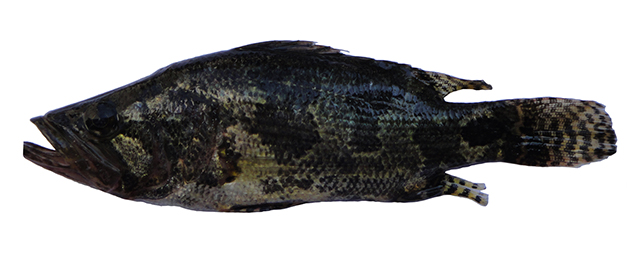| Nandidae (Asian leaffishes) |
| 13.5 cm TL (male/unsexed) |
|
pelagic; freshwater; brackish; pH range: 6.5 - 7.5 |
| Asia: Bangladesh (Greater Noakhali Region). |
|
Dorsal spines (total): 13-13; Dorsal soft rays (total): 11-13; Anal spines: 3-3; Anal soft rays: 7-18. This species is distinguished by the following characters: TL 114.1-142.4 mm, SL 94.1-117.3 mm, body depth at anus 29.0-32.9% of SL, head length (HL) 39.6-42.2% of SL; dark spot on the caudal peduncle; concave ventral portion of the body; gill arch V-shape; body colour , greenish; pectoral fin rays 9-11; snout length 24.5-33.1% of HL; eye diameter 18.1-20.4% of HL; differs from its congeners in body colour, smaller eyes, a concave ventral body, a V-shaped gill arch and a dark spot on the caudal peduncle (Ref. 93873). |
| This species lives in the freshwater ecosystem of Noakhali and is widely distributed in ponds, ditches, canals, flooded rice fields, swamps, marshes, waterlogged areas and rivers. A very tenacious species that can live in foul water and a surface dweller that consumes insects, algae and small fish. Breeding period varies from April to September. During the study period, the physicochemical parameters were recorded as follows: water temperature 18-28 °C, pH 6.5-7.5, dissolved oxygen 4.5-5.0 mg/l and transparency 45-60 cm for a water body 1.0-1.8 m deep. In the study area, it represents 15-20% of the total Nandus catch (Ref. 93873). |
|
Not Evaluated (N.E.) Ref. (130435)
|
| harmless |
Source and more info: www.fishbase.org. For personal, classroom, and other internal use only. Not for publication.

